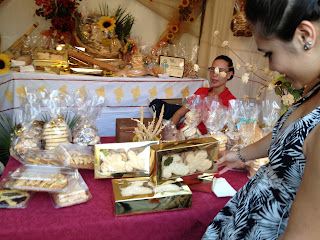Palestrina, located about 40 kilometers south-east of Rome, is a fascinating hillside town steeped in history. The ancient temple of the Goddess of Fortune provides the base for the center of the town and the laberynth of cobblestone streets is a fun challenge for even the most experienced travelers. Each corner reveals a glimpse of the past, a hidden treasure providing testimony of the rich cultural and artistic heritage of the area. Every stair leads to an adventure through the discovery of interesting architecture and art history.
The most interesting historical and architectural element is undoubtedly the national archeological museum, located at the upper part of town inside Palazzo Baberini, with an open archeological area below. The semi-circular stairs leading to its entrance are an amphitheatre which opens out onto the valley below; it seems to pre-announce Shakespeare's words: "All the world's a stage, And all the men and women merely players..."
WHAT TO DO THERE:
Places to visit include the National Archeological Museum, the Antro delle Sorti, the main cathedral Sant'Agapito, the Diocisis Museum of Religious Art, the Home of Giovanni Pierluigi da Palestrina, the walls built of cyclopic masonry.
Best place to watch the sunset is on the steps of the archeological museum.
HOW TO GET THERE:
Cotral Buses leave you at the base of the temple near the entrance to the historic center; free and easy parking is at the ex-train station on via della Martuccia; limited paid parking in the city center; the closest train stationas are in Zagarolo, Labico and Valmontone.
WHERE TO STAY:
Altavista Casa Vacanza provides short term stays in a two-bedroom, tastefully decorated home for prices ranging from 50-80 euros per night depending on the length of stay: www.altavistaroma.it
WHERE TO EAT:
The best quality-price ratio can be found at La Taberna, situated in the Vicolo del Duomo or at the Antica Trattoria. Pizza by the slice at Amore di Pizza in the center by the main church or at Strapizzami by the hospital. Best beer at La Taberna. Best pastries at Oscar in the center and Pennisi on via Pedemontana.
OPEN AIR MARKETS:
From Monday to Saturday in front of the post office there is a fruit and vegetable market; Tuesdays and Fridays you'll also find the fish market. On Saturday morning the large open air market is held in Piazza Italia in the area near the hospital.
WHERE TO SHOP: Arte del Rame for hand carfted copper objects, Bottiglieria del Gallo for wine tasting and edible souvenirs, Cultural Association "Ricamo Prenestino" for hand embroidered linens.






